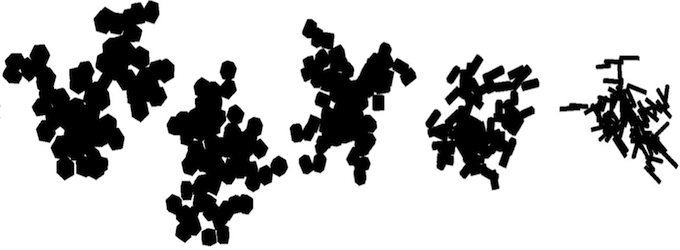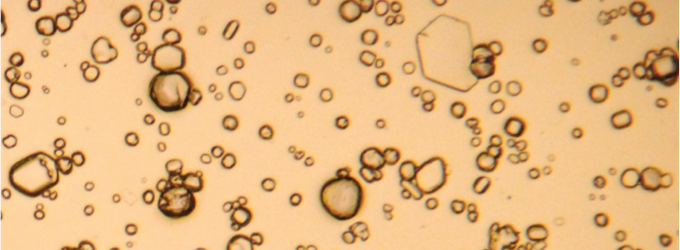Cloud Physics research
The IPAS model: Ice Particle Aggregate Simulator.
I have recently written a program which simulates ice particle aggregation in clouds. When people think of ice crystals, they of perfect hexagonal crystals, similar to the crystals shown in the images above. In reality though, most particles in clouds are aggregates of many of these hexagonal crystals. Anyone who has been caught in a snow storm has seen blobs of snow crystals stuck together, often with the components too small to identify hexagonal shapes. I created the IPAS model in order to simulate the formation of these larger aggregates and snow flakes. The model is written in IDL programming language and is on the order of 10,000 lines of code.
The IPAS model starts by defining a single seed crystal. In a three dimensional coordinate system, the twelve points representing the points of a hexagonal prism are saved. A random number generator is then used to introduce additional hexagonal particles into the "computer space". Calculations are done to determine where and if the particles would hit and attach to each other. After a crystal is added to the seed crystal the entire particle is oriented as it would be while falling through a cloud. The process is repeated and additional single crystals or aggregates are added. I can simulate ice crystal aggregates with up to 300 component crystals on a 4 year old desktop PC. There are several different types of instruments that are used to take pictures of ice particles in the sky. At each step of building the aggregates, I can simulate what these instruments would see. I have used these IPAS simulated particles in combination with instrument measurements to learn about atmospheric ice particles.
Many of my recent ice cloud publications have used the IPAS model in different ways to better understand atmospheric ice clouds.

